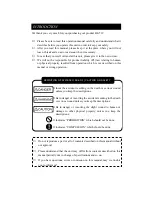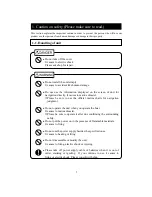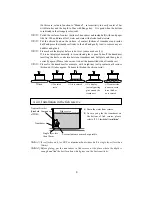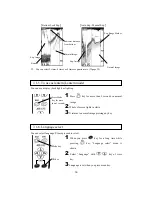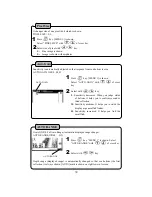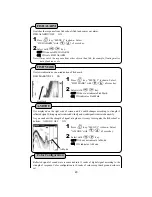
width of fish school becomes on the screen. The important thing to distinguish the fish
volume is to judge it according to size of fish school and the strength of reflected echo
(color) while you keep “the deeper fish school stays the bigger picture is displayed” in
your mind.
4. How to distinguish the nature of bottom
Rock
Sand or Mud
●
In case you distinguish the nature of
bottom, you judge from the thickness of
bottom image and the situation of
second reflection. At the hard bottom
like rock, reflection of transmitted wave
becomes strong and bottom image
becomes thick and second reflection
becomes easily to appear. On the other
hand, at the soft bottom like sand or
mud the reflection becomes weak and
bottom image becomes thin and the
second reflection becomes hard to
appear.
2nd reflection
※
Second reflection… Ultrasonic wave transmitted from transducer is reflected from sea bottom
and then it is reflected from both sea surface and bottom finally. In short,
second reflection is image of round trips between sea surface and bottom.
3. Features of unit
★
Wide view-angle and bright display, small size and high resolution
TFT LCD is applied
.(
272
×
480
pixel
)
★
Integrated battery box
Maximum 10 hours operating using 8 pcs. size AA battery
★
Compactly store with front protect cover which can be also used as
mounting bracket.
★
Effective for night work
“Lantern mode” using as lighting is incorporated.
★
Auto function adjusts sensitivity and depth range automatically.
★
High speed soundings, Maximum approx. 3,000 times/minute
★
Useful fish mark and fish alarm
5


